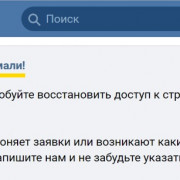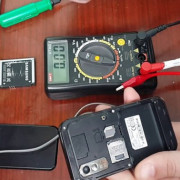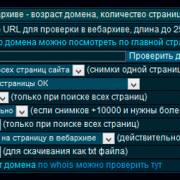Ubiquiti device discovery tool on windows pc
Содержание:
Configuring the Ubiquiti Discovery Tool and Controller
Once you have the controller software installed on whatever server you are using the setting will be the same.
Go to the website https://<ServerIP>:8443/ and you will be presented with a window like below.
Unifi controller home page
Enter the name of the controller or leave it as the default Unifi Network, accept the EULA and license then click the Next button.
Next, you will be presented with a login prompt where you will enter your username and password for unifi.ui.com. Authenticating with a Ubiquiti acccount is the default.
You’ll then be presented with two options. If you’re setting up a Wifi access point, by default, the Unifi Controller will attempt to boost wifi performance in a heavily loaded network with your Unifi products. This includes shutting down broadcast and multicast when the access point(s) are overloaded. You can control this setting by toggling the Automatically optimize my network option.
At this screen, you can also choose to automatically backup your controller. If you choose this option, you can configure a server to backup to and restore from the settings menu in the controller. If you would like to disable either of these you can uncheck them.
UniFi Network Setup
Once you’ve defined the settings above, you will be prompted to adopt any Unifi devices that are pending adoption on your network. If you are setting up the controller with a new Unifi device they should appear in the list.
If they have already been adopted by another controller or the Unifi mobile app, they need to be forgotten before you can adopt them with this new Unifi Controller. For troubleshooting adoption, you can reference Ubiquiti’s documentation here.
After device adoption, set up your Wifi network by providing the SSID and password. You can skip this set to be completed later by clicking the Skip button too. You also have the option to use the same SSID and password for both 2.4GHz and 5GHz wifi networks. All of these settings can also be changed within the controller after the setup.
Setting up Wifi on the Unifi Controller
Next, validate the setup settings and click Finish. This will log you into the controller and ask if you would like to provide usage data to Ubiquiti. If you do not mind providing anonymized data, select Send to Ubiquiti or to opt-out of the data select Don’t Send. This can also be changed in the settings pages later.
Sending diagnostics and usage data to Ubiquiti
Once you’re logged into the Unifi Controller, go to the Unifi Cloud Site to access your controller from the internet using your Unifi account. You can use the Unifi Cloud site to access your controller even if you are on the same network. Here you can Ubiquiti discovery tool to discover devices and manage all aspects of your Ubiquiti devices!
Your Unifi Network
That’s it! You’ve got a brand new, Unifi Controller all set up and ready to go!
Installing the Ubiquiti Controller
To manage Ubiquiti networking devices, you must set up the Ubiquiti discovery tool and controller. This controller connects to and manages all of the devices on your network. Let’s set one up.
Since the controller supports Windows, Mac OS X, and some distros of Linux, we’re going to cover two different options for installing the controller; installing on Windows and Linux.
Installing the Unifi Controller on Windows Server
Using Windows Server or even a Windows desktop is a common host for a Unifi Controller. To use get it the controller set up is as easy as installing the software and launching it. The installer will install a basic web server that you can log in and start managing devices.
Prerequisites
Before you start, be sure you have the following prerequisites:
- Windows Server 2019 – All of these steps will also work on most other Windows versions.
- Unifi Controller Software for Windows – This article will use version 5.13.29.
- Amazon Corretto 8 – Java 8 is also acceptable assuming you meet the licensing requirements or other OpenJDK package.
- An account for unifi.ui.com.
Installing the Controller
To run the Ubiquiti discovery tool, you must first install the controller software, you’ll first need to install Java if you don’t have it already. The controller software requires Java. In this article, you’re going to install Amazon Corretto rather than the typical Java download from Oracle. If you need to remove Java for some reason, check out this article.
Assuming you’ve already downloaded Corretto, run the MSI to install OpenJDK and follow the prompts ensuring you leave everything as default to finish the installation of OpenJDK.
Once you’ve installed Coretto, now run the Unifi Controller software you should already have downloaded. Accept all of the defaults and finish the install. The Unifi Controller software will launch and after a minute or so it will show that it is started.
The Ubiquiti Unifi Controller software running
Once the controller shows as started (see above), close the window and click Yes on the confirmation to close the controller. This stops the controller so you can install the service.
Creating the Windows Service
Once the controller software is installed, it will only work if someone is logged in. To force it to run all of the time, you need to set it up to run as a Windows service. But first, be sure to remove the Unifi shortcut on the desktop.
The Unifi Windows shortcut
To create the service, open an administrative command prompt and run the below commands. You can see what each command does in the comments.
Now that you have configured the service, validate that it is running using the command . You should not receive an error and see that the service is running.
Installing on Linux
While you can use a Windows Server for the Unifi controller, Ubiquiti also offers an option to run the controller on Linux. Let’s dig in and discover how to do that.
Prerequisites
If you’re installing on Linux, be sure you have the following ahead of time:
- A current Debian or Ubuntu OS with root access – The steps will use Debian 10
- An account for unifi.ui.com
And that’s it. Everything else will be handled during the install process.
Installing the Ubiquiti Discovery Tool and Controller
To get the controller installed on Linux you have many options. Ubiquiti has some instructions on how to install the controller on their website but it only covers the install for a couple of specific versions of Linux. To use Debian, use the script that has been posted on the Unifi forums by member AmazedMender16.
To start the install, first ssh into the Debian server or access the server from the console. Log in either as root or as another user that has root access and then run .
Update the apt repos.
Next, install the ca-certificates and wget packages.
Download and run the Unifi Controller installer script. This script will handle the install of the dependencies and controller software for many different distros of Linux including the Debian 10 server we are using.
You will be prompted for a few things while the script runs. First, it will ask if you want to keep the script downloaded after the install. In most cases this is not required, so you should enter and then press enter.
Ensuring the Unifi controller software is kept up to date
You may receive a prompt to update packages during the install. Enter and then press enter.
Confirming it’s OK to update packages
Finally, you will be prompted to add the apt repo for Unifi to update the controller from . Enter and press enter as this will make upgrades serviceable through .
Adding the Unifi Network Controller repo to apt
Once the install completes, the script will output the version of the controller installed and the URL to use to start configuring the controller.
How to Install Ubiquiti Device Discovery Tool in PC (Windows and Mac OS)
Following are the 2 methods to install Ubiquiti Device Discovery Tool in PC:
- Install Ubiquiti Device Discovery Tool in PC using BlueStacks App Player
- Install Ubiquiti Device Discovery Tool in PC using Nox App Player
1. Install Ubiquiti Device Discovery Tool in PC using BlueStacks
BlueStacks is an Android App Player that allows you to run Android apps on PC. Following are the steps on how to install any app on PC with Bluestacks:
- To begin, install BlueStacks in PC
- After Bluestacks installation, double-click its icon from desktop to launch it
- Once BlueStacks is launched, you need to log in to Google account from within Bluestacks
- Click «My Apps» button in the emulator
- Search for: Ubiquiti Device Discovery Tool
- You will see search result for Ubiquiti Device Discovery Tool app just install it, find here the app whose developer is listed as Ubiquiti Networks, Inc.
2. Install Ubiquiti Device Discovery Tool in PC with Nox Player
Nox Player is one such Android emulator of reputable stature. Below is a step by step tutorial on using Nox Player for installing Ubiquiti Device Discovery Tool in your PC. Follow the steps below:
- See this tutorial to install Nox Player in PC
- It is Android emulator, after installing run Nox Player in PC, and login to Google account
- Tab searcher and search for: Ubiquiti Device Discovery Tool
- Install Ubiquiti Device Discovery Tool on your Nox Player
- Once installation is completed, you will be able to run Ubiquiti Device Discovery Tool on your PC
About Ubiquiti Device Discovery Tool
UBNT Device Discovery tool is an app which is used to locate the devices or discover the ubiquity devices near you, you can filter the devices in different categories Unifi, Airmax, EdgeMAX or you can search the devices with its name. Once you are done with the locating and discovering of the device it will give you some information about the device like its IP address, MacBook address, and its version.
It is a very useful app for finding an IP address or MAC address devices on your network. Currently, its two versions are available as an extension with google chrome and its java version.
Unifi Nano HD is the longest Wifi service available you can scan it almost 15 KM long.
Its discovery tool let you know the devices which are near you and you can access them easily and also get their IP address to locate it more. It is the secure and protected simply scalable video security system, it is generation 2 technology. This app is considerable extra than a Wi-Fi technology system.
UBNT Device Discovery Tool APK And Features:
- Locate the devices near you
- Get details about their IP address
- Protected video security system
- Longest Wi-Fi devices with Unifi discovery
Upgrading the Controller
Let’s assume you already have a controller installed. It’s been a while since you’ve installed it and some updates have come out. You need to know how to upgrade it.
Updating a controller differs a little between operating systems. Regardless, updates are something that needs to be planned for to stay on current and supported versions of the controller.
Updating Unifi Controller on Windows Server
To update the Unifi Controller on Windows, first head over to Unifi’s download page and download the Unifi Network Controller for Windows. This will download the newest version of the controller software. If you need to move to an older version you can select See Past Software to download an older version of the controller also.
Once you have the installer downloaded, uninstall the service that was installed during the setup by opening an administrative command prompt and running the following.
This will ensure all of the processes are functioning as expected and that all of the files get updated.
Once the uninstall is finished, run the installer downloaded in the previous step. After it is complete, launch the controller via the desktop shortcut that was automatically created during the upgrade and close it.
Now go to your command prompt and run the below commands.
After the service is installed again, log back into the controller through the web page at https://<ServerIP>:8443/.
Updating Unifi Controller on Linux
To update the Unifi Controller in Linux is much less hassle than Windows.
Log into the server that is running the controller as root or as a user that has root access.
Run and wait for it to complete. This command will use to upgrade the Unifi package to the newest version. After it outputs that the update has been completed you can log back into the controller through the web page.
Upgrading Unifi Controller on Linux


